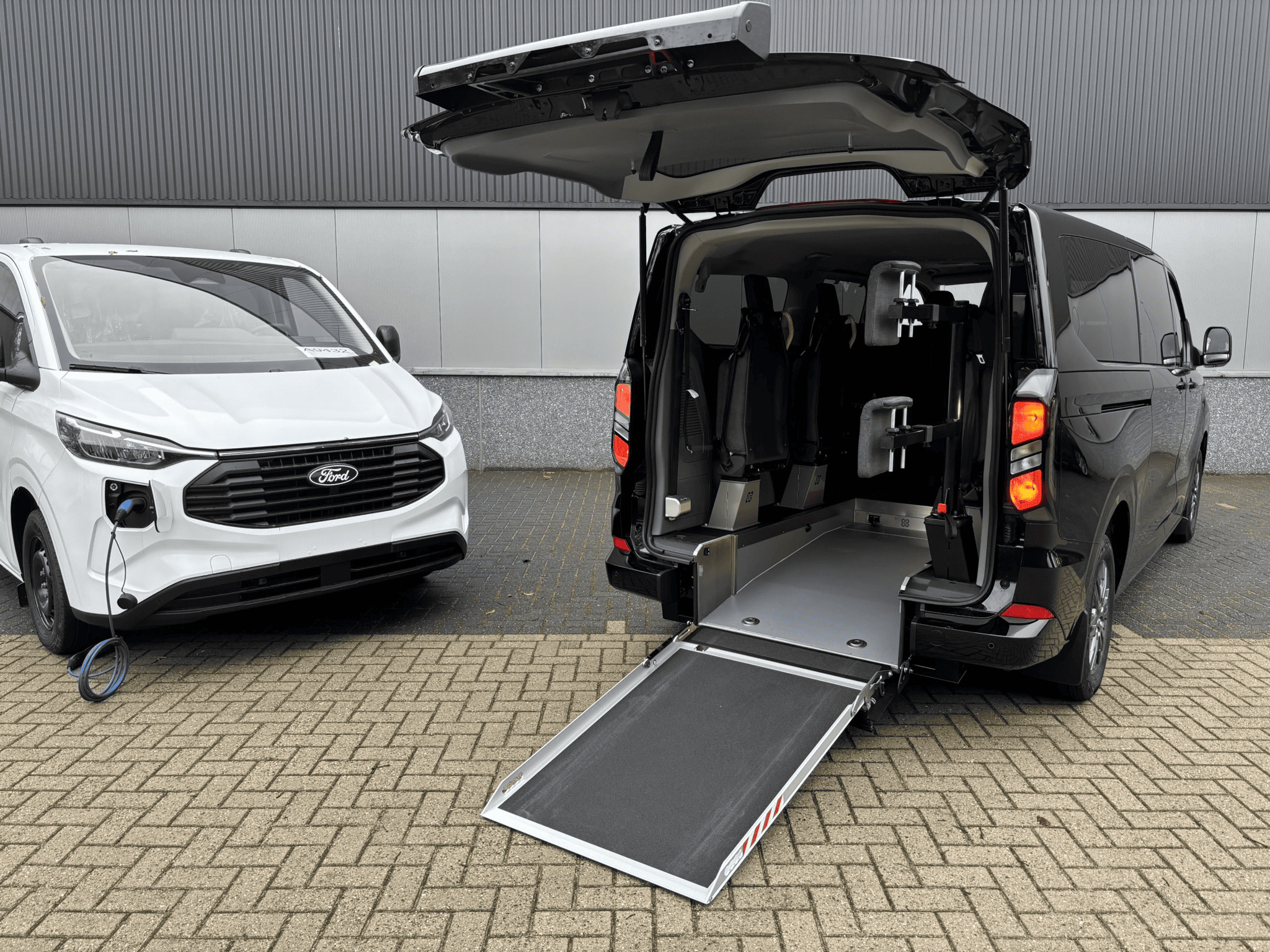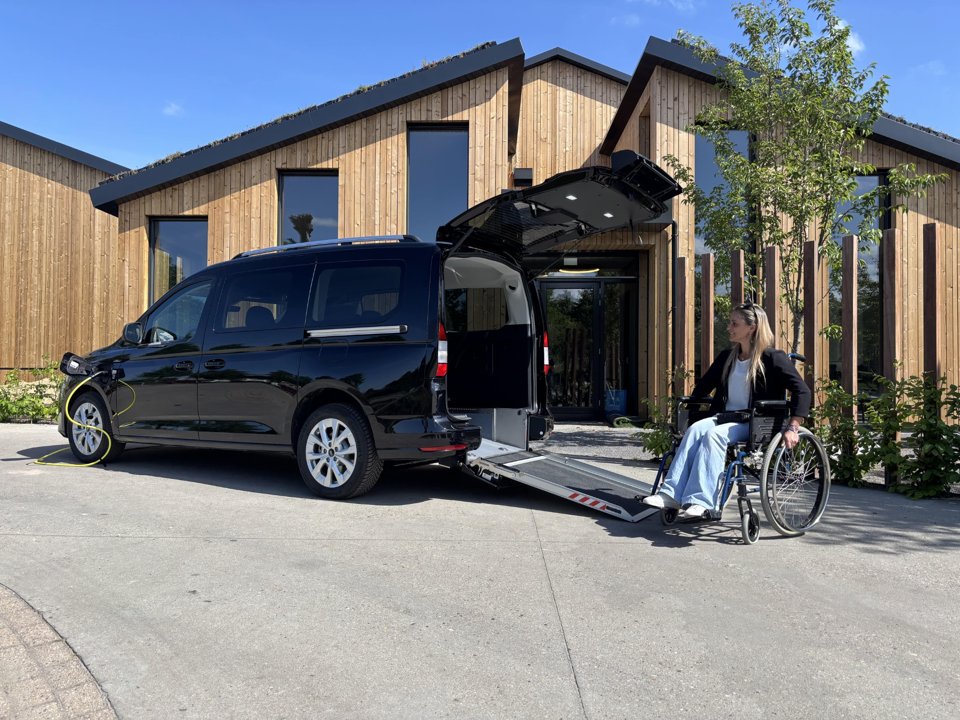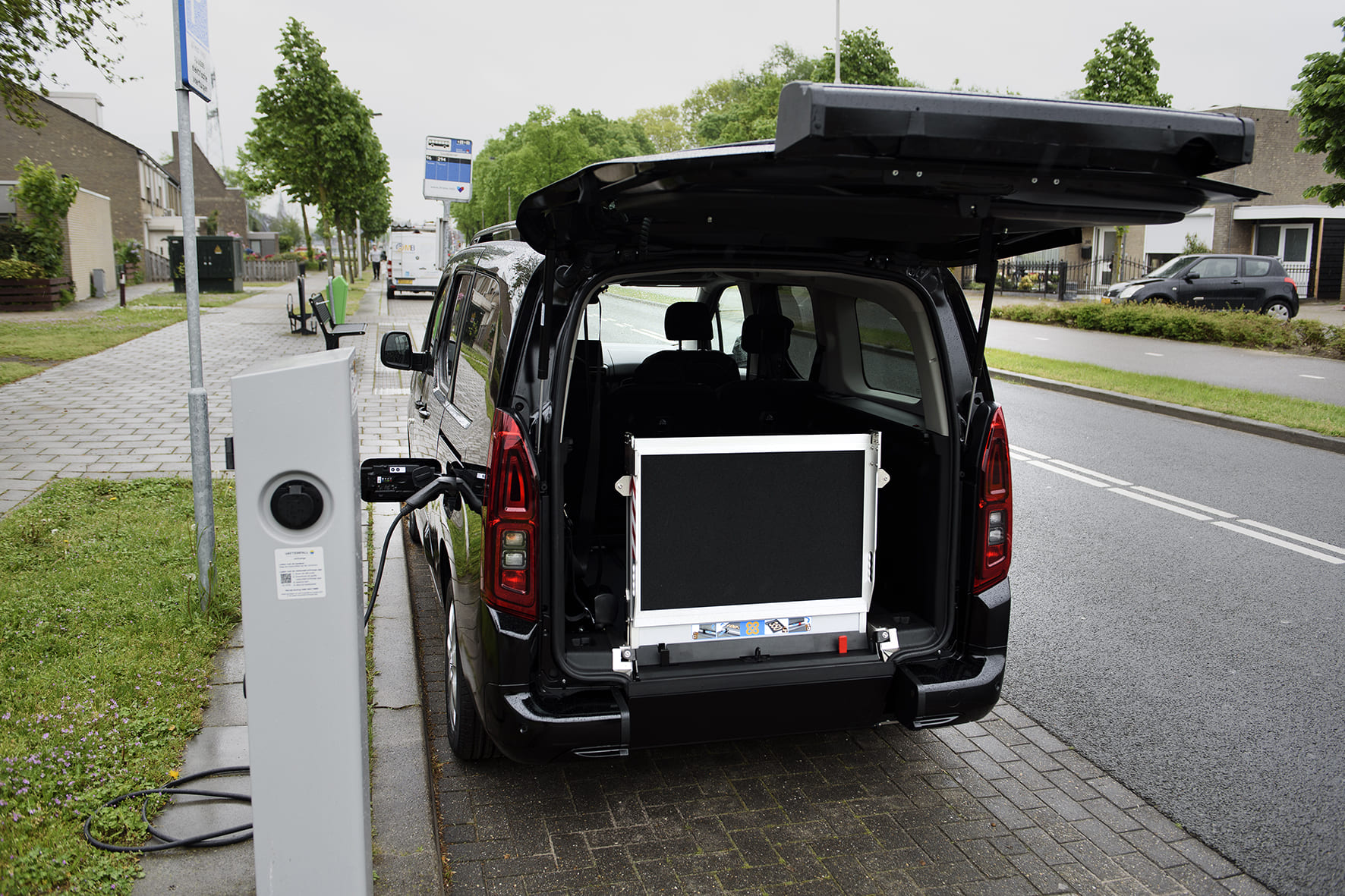In house R&D + testing facilities
The Challenge of Electrification for Wheelchair Accessible Vehicles
The Challenge of Electrification for Wheelchair Accessible Vehicles – and How B-Style Is Shaping the Future

The mobility industry is changing rapidly. As combustion engine vehicles make way for electric and hybrid alternatives, the demand for reliable wheelchair accessible vehicles continues to grow. This shift creates major opportunities, but also significant technical challenges for our sector.
At B-Style Mobility Solutions, we work daily on solutions that keep mobility accessible for everyone, regardless of the powertrain. The transition to electric mobility presents new engineering challenges, but it also strengthens our role as an innovator in wheelchair accessible vehicle technology.
Why Electric Vehicles Are Challenging for Wheelchair Conversions
Lowering the vehicle floor is essential when creating a wheelchair accessible car or van. With combustion engine vehicles, this is usually feasible: most critical components are located at the front, while the rear floor area is free for modifications.

Electric vehicles are completely different.
The battery pack is almost always positioned in the vehicle floor – exactly where the lowered floor is normally installed.
This leads to three major challenges:
1. Limited space in the vehicle floor
The battery pack occupies the entire floor area. Removing or relocating it is not technically feasible and is prohibited for safety reasons. This makes traditional lowered-floor conversions impossible without a fully new engineering approach.
2. Structural safety concerns
The floor of an electric vehicle forms part of the protective structure around the battery. Modifying this structure can compromise safety, making EV conversions significantly more complex.
3. Stricter homologation requirements
Converting an EV requires additional testing, such as:
-
battery and isolation safety
-
thermal management
-
structural testing
-
extended certification procedures
This makes development more demanding, but it is crucial to ensure safe and compliant conversions.
The Impact on the Accessibility Market
Governments, taxi companies, care institutions, and fleet operators are committed to sustainability. As a result, demand for electric and hybrid wheelchair accessible vehicles is rising quickly.
However, only a limited number of EVs are technically suitable for wheelchair conversions. As a result:
-
end-users have fewer options
-
dependence on vehicle manufacturers (OEMs) increases
-
specialist engineering is more essential than ever
This is precisely where B-Style makes the difference.
100% Focus on Development: What Sets B-Style Apart
B-Style Mobility Solutions is fully dedicated to the development of conversion systems for wheelchair accessible vehicles.
We do not convert vehicles ourselves.
This makes us unique in the industry.
Our focus is entirely on:
-
engineering
-
R&D
-
prototyping
-
testing and certification
-
documentation
Our partners – dealers and converters around the world – perform the actual conversion using our certified, extensively engineered kits.
Why This Focus Adds Real Value
Because we are not involved in physical conversion work, we can:
-
respond quickly to new technologies like EVs and PHEVs
-
develop safer and more efficient solutions
-
support partners globally with clear documentation
-
guarantee consistent, high-quality conversion kits
-
collaborate closely with vehicle manufacturers
This ensures that every partner can rely on the best technical foundation for a wheelchair accessible conversion.
Maximum Safety: Battery Pack Untouched, Factory Warranty Fully Retained
One of the biggest concerns with electric and hybrid vehicles is the impact of a conversion on the battery pack and the factory warranty. At B-Style, this is simple and transparent:
The battery pack always remains completely untouched
Our engineers design every conversion kit so that the battery structure, cooling system, wiring, and protective elements remain fully intact. This ensures that vehicle integrity is never compromised.
Factory warranty remains fully valid
Because the battery and all critical EV components are untouched, the original factory warranty remains intact. This makes our conversions safe, reliable, and attractive to both end-users and fleet operators.
European homologation + OEM approval
All B-Style conversion kits are:
-
fully European homologated, including EV-specific safety standards
-
approved by the vehicle manufacturer (OEM) where required
This ensures full legal compliance and technical safety across all European markets.
Innovation Through Collaboration: The Toyota APM for the Olympic Games

During the Olympic and Paralympic Games in Paris, the Toyota APM (Accessible People Mover) was deployed extensively to transport visitors, athletes, and people with reduced mobility. In close collaboration with Toyota Motor Europe, B-Style co-developed this vehicle so that it could be used as a fully wheelchair accessible mobility solution during the world’s largest sporting event.
The APM is designed for short-distance transport in high-traffic areas, offering fast, comfortable, and accessible mobility. Thanks to the joint engineering efforts of Toyota and B-Style, the APM was equipped with a safe wheelchair position, a ramp system, and an interior layout meeting all international safety standards.
This collaboration demonstrates exactly what B-Style stands for: innovation, partnership, and making mobility accessible on a global scale.
Available Electric Conversions
Despite the challenges of EV architecture, B-Style already offers several certified conversion kits for the latest generation of electric vehicles.
Fully electric models with available B-Style conversions:
-
Mercedes-Benz EQV
-
Stellantis EK9 L2 platform, including:
Hybrid Solutions Ready for the Future
For plug-in hybrid vehicles (PHEVs), B-Style also offers fully developed conversion kits. These models combine sustainability with practicality and are technically suitable for wheelchair accessible conversions.
Hybrid models with available B-Style conversions:
Unique: Up to 7 passengers + 1 wheelchair user or 9 passengers without a wheelchair
For the latest larger models such as the Volkswagen Transporter eHybrid and Ford Custom PHEV, our conversion offers maximum flexibility:
-
7 passengers + 1 wheelchair user, or
-
9 passengers without a wheelchair
This makes these vehicles ideal for taxi companies, care organizations, group transport and mobility services aiming to electrify their fleet without sacrificing capacity or usability.
Looking Ahead: Innovation as the Key to Accessible Electric Mobility
The shift toward electric mobility requires creativity, engineering depth, and strong collaboration. That is why B-Style continues to invest in:



-
new generations of conversion kits
-
extended EV safety testing
-
modular engineering solutions
-
continuous optimization of efficiency and quality
Our mission remains unchanged:
Create a bigger world.
Even in an electric future, mobility must remain accessible for everyone.








































